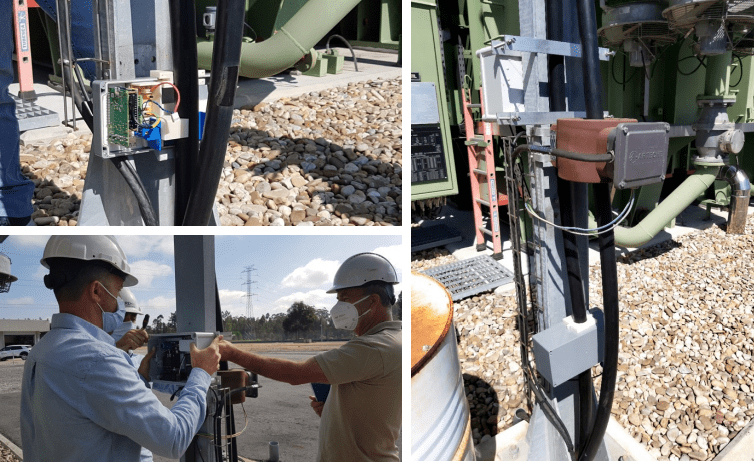Can electrical currents generated by geomagnetic storms (sudden variations in the earth's magnetic field originating from solar storms) cause disturbances in Portugal's electricity grid? To answer this question, it is first necessary to measure these currents, the so-called GICs (Geomagnetic Induced Currents).
Calculating, measuring and monitoring the amplitude of these induced geomagnetic currents in Portugal is the main objective of the project “MAG-GIC: currents induced by the geomagnetic field in Portuguese territory”.
This is the first study of its kind in the country, which brings together a dozen researchers from two research centers of the Faculty of Science and Technology of the University of Coimbra (FCTUC), namely the Earth and Space Research Center (CITEUC) and the Laboratory of Instrumentation, Biomedical Engineering and Radiation Physics (LIBPhys-UC).
It also counts on the important collaboration of researchers from Instituto Dom Luiz, in Lisbon, and engineers from REN – Redes Energéticas Nacionais.
For two years, the team led by Alexandra Pais, professor at the Physics Department at FCTUC and researcher at CITEUC, worked on the numerical calculation of GICs.
For this, it was necessary to collect information about the characteristics of the energy transport network and to make geophysical measurements that allowed the calculation of the conductivity of the lithosphere in the region of mainland Portugal.
Then, to test the calculated GIC values, we tried to compare them with observations. In order to be able to carry out measurements of GICs, the team had researchers from LIBPhys-UC, where a data acquisition, analysis and recording system, with remote access, was developed.
«The system now installed at the Paraimo substation (Aveiro), with the help of REN engineers and technicians, continuously measures the currents induced by the terrestrial magnetic field fluctuations in the very high voltage lines, allowing them to be monitored in real time and remotely, and seeks to understand the effect of disturbances in the earth's magnetic field, caused by solar storms, on the electricity grid managed by REN», explains Alexandra Pais.
Geomagnetic storms are caused by the activity of the Sun. From time to time, plasma clouds are emitted into interplanetary space, which, arriving close to the Earth, interact with its magnetic field.
During these storms, “rapid variations in the Earth's magnetic field occur, caused by electrical currents of magnitude in the order of millions of amps. These currents circulate far above the Earth's surface, in a region called the magnetosphere. Its effects are, however, measurable on the surface, specifically in the magnetic observatory of Coimbra», explains the professor of the Physics Department at FCTUC.
Throughout the MAG-GIC project, funded by the Foundation for Science and Technology (FCT) and running from 2018 to 2022, «we calculated the distribution of GICs in REN's electricity grid substations, while identifying the factors to the estimated values are particularly sensitive,” he adds.
The measurements that are now being carried out under the project are essential to confirm the effects of space weather (Space Weather) on the national energy transport network. Therefore, says Alexandra Pais, the next step in the investigation will be “to understand how these currents individually affect the different elements of the electrical circuit, in particular the transformers at REN's substations”.
«We hope in the future to be able to continue the work carried out, installing more sensors, such as the one in Paraimo, in other REN substations», he concludes.
You can find out more about the MAG-GIC project here.
Author: Cristina Pinto – Press Office – University of Coimbra – Science Communication





















Comments